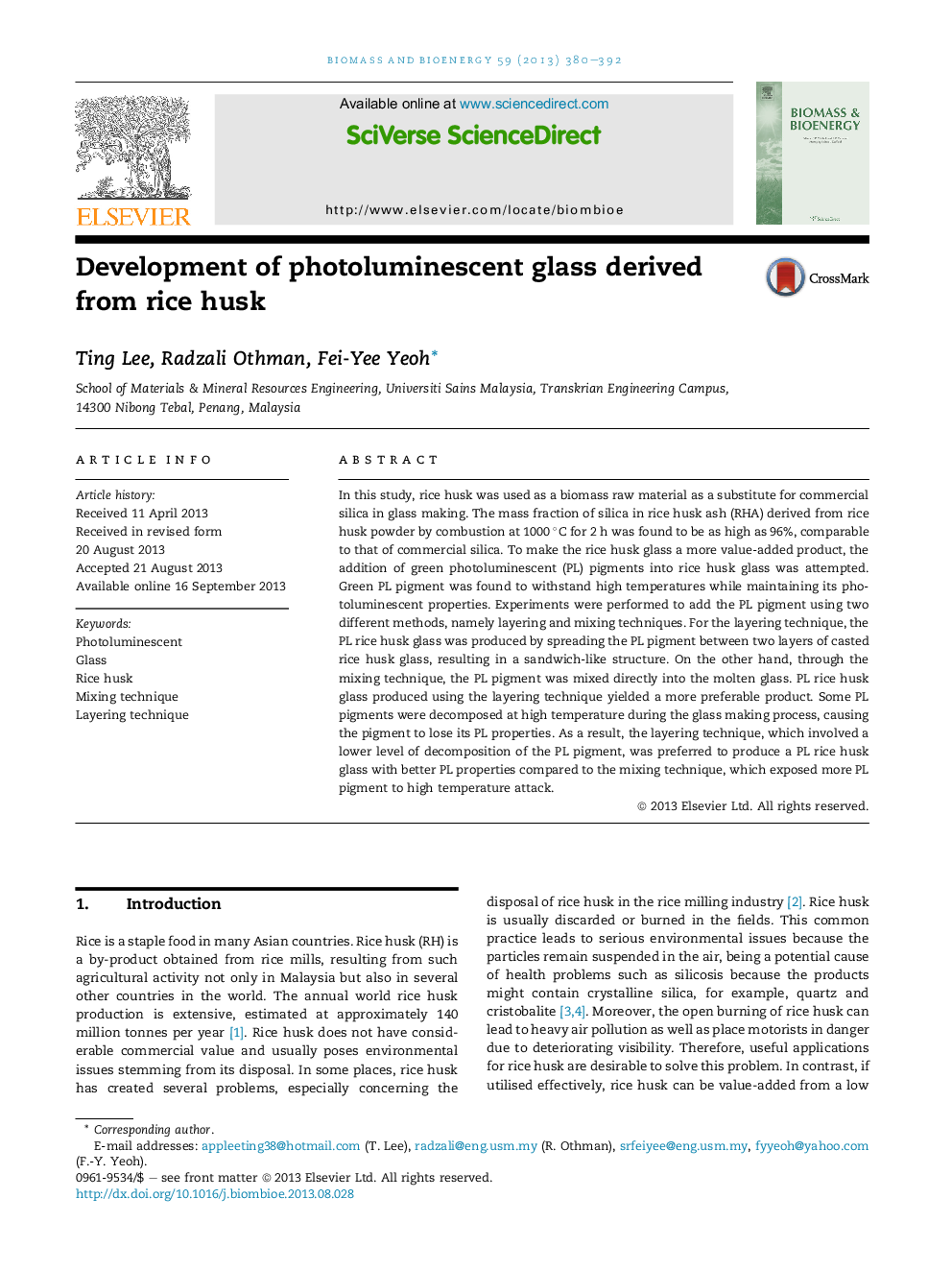| کد مقاله | کد نشریه | سال انتشار | مقاله انگلیسی | نسخه تمام متن |
|---|---|---|---|---|
| 677038 | 1459834 | 2013 | 13 صفحه PDF | دانلود رایگان |

• Rice husk was used as a raw material of main silica source in glass making.
• Photoluminescent rice husk glass was produced by layering and mixing technique.
• Layering technique was preferred to produce photoluminescent rice husk glass.
• Less pigments in the sandwich-like glass structure decomposed.
In this study, rice husk was used as a biomass raw material as a substitute for commercial silica in glass making. The mass fraction of silica in rice husk ash (RHA) derived from rice husk powder by combustion at 1000 °C for 2 h was found to be as high as 96%, comparable to that of commercial silica. To make the rice husk glass a more value-added product, the addition of green photoluminescent (PL) pigments into rice husk glass was attempted. Green PL pigment was found to withstand high temperatures while maintaining its photoluminescent properties. Experiments were performed to add the PL pigment using two different methods, namely layering and mixing techniques. For the layering technique, the PL rice husk glass was produced by spreading the PL pigment between two layers of casted rice husk glass, resulting in a sandwich-like structure. On the other hand, through the mixing technique, the PL pigment was mixed directly into the molten glass. PL rice husk glass produced using the layering technique yielded a more preferable product. Some PL pigments were decomposed at high temperature during the glass making process, causing the pigment to lose its PL properties. As a result, the layering technique, which involved a lower level of decomposition of the PL pigment, was preferred to produce a PL rice husk glass with better PL properties compared to the mixing technique, which exposed more PL pigment to high temperature attack.
Journal: Biomass and Bioenergy - Volume 59, December 2013, Pages 380–392